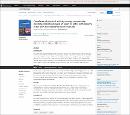| dc.description.abstract | Given the important health benefits of physical activity (PA) and the higher risk for physical inactivity in people with anxiety, and the high prevalence of anxiety and low PA among the elderly, there is a need for research to investigate what factors influence PA participation among anxious older individuals. We investigated PA correlates among community-dwelling adults aged ≥ 65 years with anxiety symptoms in six low- and middle-income countries.
Methods:
Cross-sectional data from the World Health Organization's Study on Global Ageing and Adult Health were analyzed. PA level was assessed by the Global Physical Activity Questionnaire. 980 participants with anxiety (mean age 73.3 years; 62.4% females) were grouped into those who do and do not (low PA) meet the 150 minutes of moderate-to-vigorous PA per week recommendation. Associations between PA and the correlates were examined using multivariable logistic regressions.
Results:
The prevalence of low PA was 44.9% (95% CI = 39.2–50.7%). Older age, male gender, less consumption of alcohol, mild cognitive impairment, pain, a wide range of somatic co-morbidities, slow gait, weak grip strength, poor self-rated health, and lower levels of social cohesion were identified as significant positive correlates of low PA.
Conclusions:
Our data illustrate that a number of sociodemographic and health factors are associated with PA levels among older people with symptoms of anxiety. The promotion of social cohesion may increase the efficacy of public health initiatives, while from a clinical perspective, somatic co-morbidities, cognitive impairment, pain, muscle strength, and slow gait need to be considered. | en_US |

